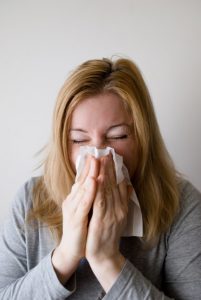Table of Contents
Although you might not notice it most of the time, you can see household dust when you pass by a beam of sunlight or after fluffing a piece of old upholstered furniture. Depending on the environment, dust includes a variety of particles.
What Do Dust Comprise Of

Dust does not entirely include dead skin cells. Although it is true that dead skin cells comprise a portion of dust, it is not always true. Generally, dust originates from 2 places – indoors or outdoors.
Indoor Dust
It comprises particles originating inside the house. Various types of matter such as animal dander, textile fibers, pet hair, paper fibers, food particles, human skin cells, and hair made up indoor dust.
Outdoor Dust
Outdoor dust includes matter from outdoor sources such as pollen, soil particles, vehicular matter or even insect parts.
Generally, many houses are polluted by both indoor and outdoor dust. The precise ratio varies within every house. Upon opening the door into your house, dust particles will enter. Furthermore, soil matter and other particles present on footwear can easily enter while walking inside the house.
How Dust Affects Your Health
The excessive build-up of dust in the house is a health concern for the entire family. Dust serves as the ideal breeding ground for insects and allergens. If exposure to the particles occurs, it can be detrimental to humans and can trigger allergic reactions or other respiratory issues.
Dust Mites
Dust mites are microscopic insects that thrive on dust and can live inside the house. The mites live within the mattress, curtains, upholstered furniture, bedding, pillows or even in carpet fibers and can be a cause for concern. The dust mites can unknowingly thrive in the house, reaching up to thousands or millions if left unchecked.
If there is an infestation of dust mites, it is vital to wash items using hot water or freeze if washing is impossible. Remember that both extreme temperatures can eliminate dust mites.
Allergic Reactions

The presence of a certain type of dust or if there is excessive build-up can trigger allergic reactions among highly sensitive individuals. A reaction although mild in most instances can be serious depending on the level of sensitivity of the individual.
The root cause or treatment approach for an individual with dust allergies might be difficult to pinpoint due to the variety of particles in the dust. Often, people who are sensitive to dust display symptoms like:
- A runny nose
- Sneezing
- Itchy, red or teary eyes
- Coughing
- Skin irritation
If an allergy is likely, the individual should undergo medical testing to determine the cause. During testing, the doctor tests the reaction of the individual to various particles and monitor for signs of a reaction.
There are also measures that can prevent or lower the risk of potential reactions. Generally, the initial step is to maintain a clean house. Dust and vacuum the house at least once a week to prevent the buildup of dust. Use a vacuum cleaner with a HEPA filter to eliminate the tiniest particles.
Infants and young children are prone to the dangers of dust due to their fragile immune systems. Remember that the health risks to infants from pollutants present in household dust are higher than the adults.
How To Remove Dust From The Air
The amount of dust in the house will not lessen unless dealing with the airborne type. Remember that airborne dust worsens allergies and asthma. It will later settle onto furniture, surfaces, and flooring which contributes to a dirty environment. Luckily, there are various removal methods available.
Using an air purifier
An air purifier will not lessen the overall amount of airborne dust all over the house unless there is one present in every room. Nevertheless, the device is effective in small spaces and lessens the number of dust particles. It also helps relieve the allergy symptoms if present in a room where an individual spends most of the time in.
Upgraded HVAC filters
Air conditioning and furnace filters have a big impact on the amount of airborne dust in the house. The ideal filter for removal is an electrostatic filter that a professional installs directly to the ductwork of the house. Despite the cost it entails, it is a worthwhile investment for those with allergies.
In some cases, using disposable filters can effectively lessen the amount of airborne dust. Choose a pleated filter made of paper or fabric to capture more pollen and dust. Change the filter at least once every 3 months. Do not forget to check the filter every month if pets are around and replace if dirty.
Ductwork cleaning
If the presence of airborne dust is an issue of concern, you might consider professional cleaning of the ductwork. Cleaning to reduce the amount of dust is only an option if there is a significant buildup of dust in the system.
Installation of new screens
Prevent airborne dust from entering the house by installing filtered window screens. The screens allow the entry of air and light while blocking dust particles and pollen. There are various options available such as filters that sit in front of the window screens or those that enclose the window openings.
Houseplants
Plants are natural air cleaners and capable of reducing dust and improve the air quality inside a house. Remember that the larger the surface area of the plant, the more dust it filters. Some good options that require minimal care include:
- Asparagus fern (Asparagus densiflorus)
- Peace lily (Spathiphyllum spp.)
- Chrysanthemum morifolium (Florist’s Chrysanthemum)
- Cast iron plant (Aspidistra elatior)
- Devil’s ivy (Epipremnum aureum)
For those who cannot maintain house plants, try adding a snake plant or ZZ plant inside the house which can thrive without requiring meticulous care.
With the help of these options, it can lessen the amount of dust in the house but will not remove it entirely.
Final Thoughts
Household dust is generally present in every home. You can lower the risk for potential allergies and flare-ups of asthma or other respiratory ailments by maintaining a clean house.
Make it a habit to clean your house regularly, especially surfaces where dust is likely to accumulate. Although you can’t have a totally dust-free home, doing so reduces the amount to a less sensitive level.
Related:
- Where Do Dust Mites Come From?
- Dust Vs. Dust Mites, Understanding What Matters
- How To Get Dust Mites Out Of Pillows
- 12 Natural Home Remedies For Dust Mites That Works
- Are Dust Mites Visible To The Human Eye





Hey, Kenny thanks for the article. Dust mites really annoy children. a few months back my nephew had an allergic reaction, because of that he was continuously sneezing and when we went deep into finding how that might have happened it came out to be Dust Mites.
I am going to try the natural methods which you mentioned to get rid-off the Dust Mites.
Thanks for the info and keep posting.
Vikrant B.
Hi Vikrant,
Thanks for checking out the post. I hope your nephew gets better. Hope the tips help.
Cheers,
Kenny